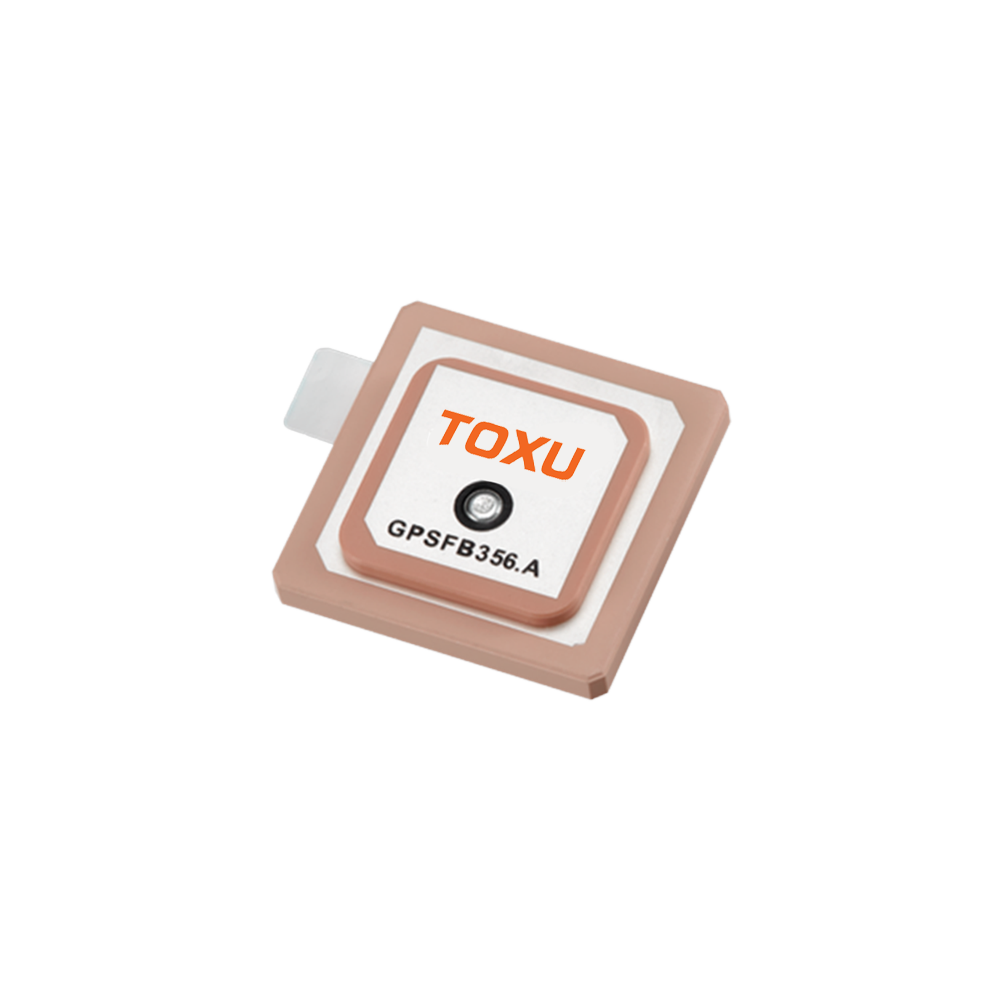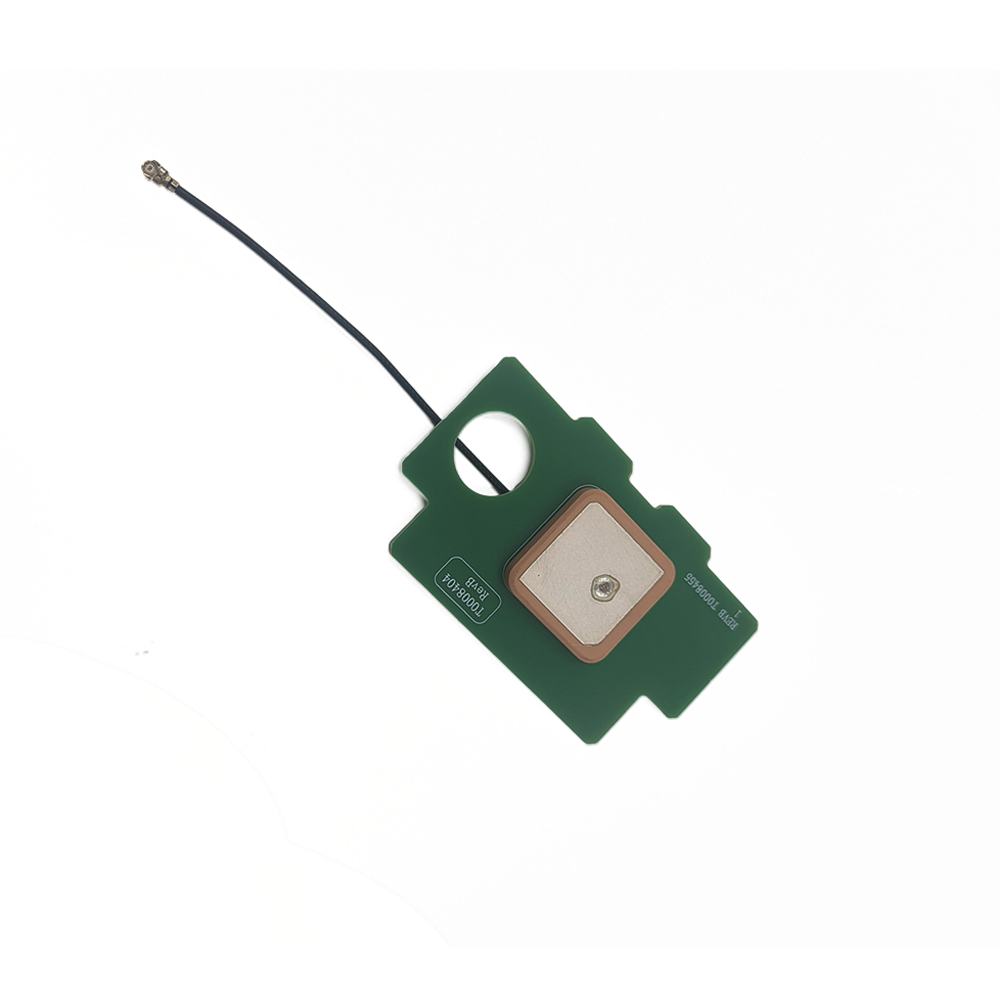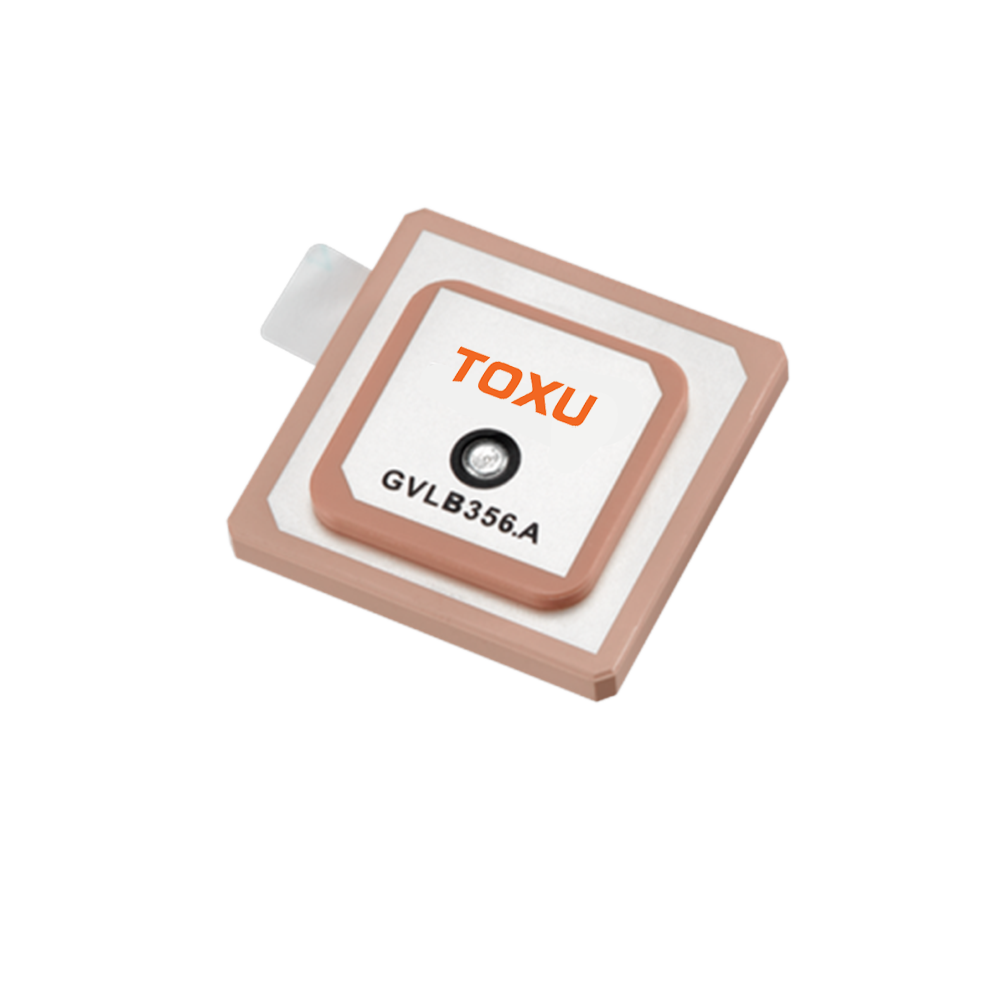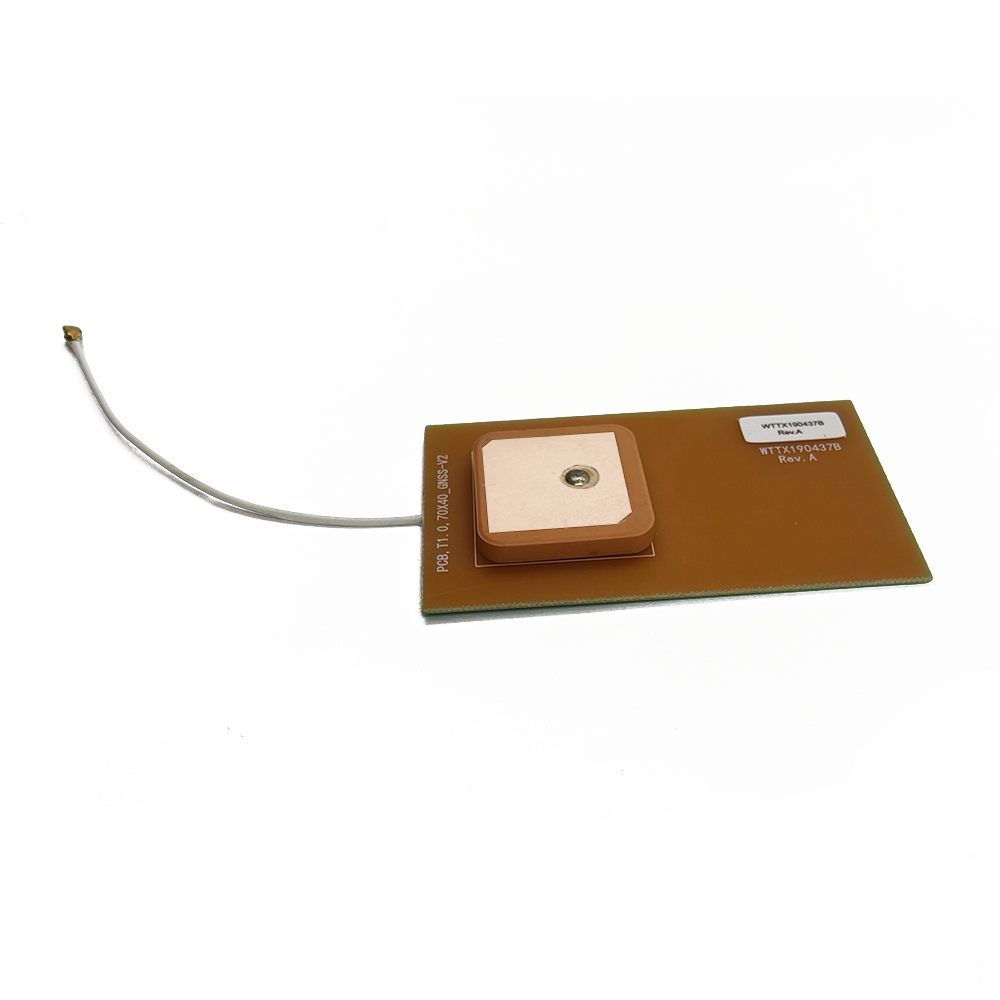5.1 Current Applications
5.1.1 Automotive Industry
In the automotive industry, multi - band custom GNSS patch antennas are playing a vital role. In autonomous vehicles, accurate positioning is essential for safe driving. The antennas are used to provide precise location information to the vehicle's navigation and control systems. With centimeter - level accuracy achievable using multi - band GNSS, autonomous vehicles can navigate more safely, avoiding collisions and making accurate decisions at intersections and in traffic. In addition to autonomous driving, multi - band GNSS antennas are also used in advanced driver - assistance systems (ADAS), such as lane - keeping assist, adaptive cruise control, and parking assist. These systems rely on accurate positioning information to function effectively.
5.1.2 Precision Agriculture
Precision agriculture is another area where multi - band GNSS patch antennas are being widely adopted. Farmers use GNSS - based guidance systems to precisely control the operation of agricultural machinery, such as tractors, harvesters, and sprayers. Multi - band custom GNSS patch antennas integrated into these machines provide the high - precision positioning needed to ensure that operations are carried out with minimal overlap and maximum efficiency. For example, when applying fertilizers or pesticides, the antenna's accurate location data allows the sprayer to target specific areas of the field, reducing waste and minimizing environmental impact. In addition, these antennas can withstand the harsh conditions of agricultural environments, such as exposure to dust, moisture, and vibrations. They are designed with rugged enclosures and durable materials to ensure reliable performance even in extreme temperatures, which can range from freezing winters to hot summers in different agricultural regions.
5.1.3 Surveying and Mapping
The surveying and mapping industry relies heavily on precise positioning, and multi - band custom GNSS patch antennas have become indispensable tools in this field. Traditional surveying methods often involve time - consuming and labor - intensive processes, but with the advent of multi - band GNSS technology, surveyors can complete tasks more quickly and accurately. These antennas can receive signals from multiple GNSS constellations and frequency bands, enabling centimeter - to - millimeter - level positioning accuracy. This level of precision is crucial for applications such as topographic mapping, land boundary surveys, and construction site layout. For instance, in large - scale infrastructure projects like highway construction, surveyors use multi - band GNSS antennas to mark the exact positions of road alignments, bridges, and tunnels, ensuring that the construction adheres to the design plans. The customizability of these antennas also allows them to be adapted to different surveying scenarios. For example, in urban surveying, where tall buildings can cause signal blockages, antennas can be designed with enhanced signal reception capabilities to mitigate the effects of multipath interference. In remote areas with limited satellite visibility, antennas with higher gain can be used to capture weak signals, ensuring continuous and accurate positioning.
5.1.4 Unmanned Aerial Vehicles (UAVs)
The use of UAVs has grown rapidly in recent years, and multi - band custom GNSS patch antennas are essential components for their navigation and control. UAVs are used in a wide range of applications, including aerial photography, surveillance, search and rescue, and infrastructure inspection. In each of these applications, precise positioning is critical to ensure that the UAV can fly along a pre - defined path, capture images or data at specific locations, and avoid collisions with obstacles. Multi - band GNSS patch antennas provide the necessary accuracy for UAV navigation. They can receive signals from multiple frequency bands and constellations, which is particularly important in environments where signal availability may be limited, such as over mountainous terrain or in urban areas. The compact size and lightweight design of custom - made antennas are also well - suited for UAVs, as they do not add excessive weight or take up valuable space on the aircraft. Additionally, these antennas can be integrated with other sensors on the UAV, such as inertial measurement units (IMUs), to provide a more robust navigation solution. In the event of temporary GNSS signal loss, the IMU can continue to provide position and orientation data, and when the GNSS signal is restored, the antenna can quickly re - establish accurate positioning.
5.2 Future Trends
5.2.1 Integration with 5G and IoT Technologies
One of the most significant future trends for multi - band custom GNSS patch antennas is their integration with 5G and Internet of Things (IoT) technologies. 5G networks offer high data transmission rates, low latency, and massive device connectivity, which, when combined with GNSS - based positioning, can enable a wide range of new applications. For example, in smart cities, 5G - connected devices equipped with multi - band GNSS antennas can provide real - time data on traffic flow, pedestrian movement, and infrastructure status. This data can be used to optimize traffic management, improve public safety, and enhance the efficiency of city services. In the IoT ecosystem, devices such as smart meters, asset trackers, and wearable devices can benefit from the integration of multi - band GNSS antennas. Asset trackers, for instance, can use GNSS positioning to track the location of goods in real - time, and 5G connectivity to transmit this data to a central server. The customizability of the antennas allows them to be designed to fit the small form factors of IoT devices while still maintaining high - performance multi - band operation.
5.2.2 Miniaturization and Low - Power Consumption
As the demand for portable and wearable devices continues to grow, the miniaturization of multi - band custom GNSS patch antennas will be a key focus in the future. Researchers and engineers are exploring new design techniques and materials to reduce the size of these antennas without compromising their performance. One promising approach is the use of nanotechnology in antenna design. Nanomaterials, such as carbon nanotubes and graphene, have unique electrical and mechanical properties that can be leveraged to create ultra - small antennas. For example, graphene - based patch antennas can be made extremely thin and flexible, making them suitable for integration into wearable devices like smartwatches and fitness trackers. Another trend related to miniaturization is the development of low - power consumption multi - band GNSS patch antennas. Many portable and IoT devices are battery - powered, so reducing the power consumption of the antenna is crucial to extend the device's battery life. This can be achieved through the use of efficient feed networks, low - loss dielectric materials, and power - management techniques. For instance, the antenna can be designed to operate in a low - power mode when not in use, and only activate full - power operation when precise positioning is required.
5.2.3 Enhanced Anti - Interference Capabilities
With the increasing number of wireless devices and the growing complexity of the electromagnetic environment, the need for multi - band custom GNSS patch antennas with enhanced anti - interference capabilities will continue to rise. Future antennas will incorporate advanced interference mitigation technologies to ensure reliable operation in challenging environments. One approach is the use of adaptive beamforming techniques. Adaptive beamforming allows the antenna to focus its radiation pattern towards the desired GNSS satellites and nullify the direction of interfering signals. This can be achieved by using an array of patch antennas and sophisticated signal - processing algorithms to adjust the phase and amplitude of the signals from each element in the array. Another promising technology for anti - interference is the use of artificial intelligence (AI) and machine learning (ML) algorithms. AI - powered antennas can learn to recognize and classify different types of interference signals, such as those from cellular networks or jammers, and automatically adjust their parameters to suppress these interferences. For example, the antenna can dynamically change its resonant frequencies or radiation pattern to avoid the frequency bands where interference is present.
5.2.4 Expansion to New Frequency Bands and Constellations
As new GNSS constellations are developed and existing ones are expanded, multi - band custom GNSS patch antennas will need to support an increasing number of frequency bands. For example, the European Space Agency's Galileo constellation is continuously adding new satellites and expanding its frequency bands to improve performance. Similarly, China's BeiDou system is also evolving, with new satellites offering additional frequency options. Future multi - band antennas will be designed to cover these new frequency bands, ensuring compatibility with the latest GNSS technologies. In addition to supporting new constellations and frequency bands, future antennas may also incorporate support for other satellite - based positioning and communication systems. For example, the integration of GNSS with satellite communication (satcom) systems can provide a more comprehensive solution for applications in remote areas where terrestrial communication networks are unavailable. Multi - band custom GNSS patch antennas can be designed to receive both GNSS positioning signals and satcom data signals, enabling seamless connectivity and positioning in any location on Earth.
Conclusion
Multi - band custom GNSS patch antennas have become indispensable components in the modern world of global navigation, offering a unique combination of high precision, reliability, and customizability. Throughout this analysis, we have explored the various aspects of these antennas, from their fundamental overview and detailed design and construction to their working principles, advantages and challenges, current applications, and future trends.
In the overview section, we highlighted the importance of multi - band functionality in enabling compatibility with multiple GNSS constellations, such as GPS, GLONASS, Galileo, and BeiDou, and the benefits of custom design in meeting specific application requirements. The design and construction section delved into the key components of the antenna, including the radiating patch, dielectric substrate, ground plane, and feed network, and explained how each component is carefully engineered to achieve optimal multi - band performance. We discussed different design approaches, such as stacked - patch configurations and fractal - shaped patches, and the selection of materials based on factors like permittivity, loss tangent, and mechanical durability.
The working principles of multi - band custom GNSS patch antennas were explained in terms of electromagnetic wave propagation and radiation, resonance and frequency selection, and polarization and signal reception. We emphasized the role of resonance in enabling multi - band operation and the importance of right - hand circular polarization (RHCP) in mitigating multipath interference and maximizing signal reception from GNSS satellites.
In the advantages and challenges section, we outlined the significant benefits of these antennas, including enhanced positioning accuracy, increased signal reliability, compatibility with multiple constellations, and customizability. However, we also acknowledged the challenges, such as complex design and optimization, size and weight constraints, interference and crosstalk, and cost - effectiveness, which need to be addressed to further advance the technology.
The applications section demonstrated the wide - ranging impact of multi - band custom GNSS patch antennas across various industries, including automotive, precision agriculture, surveying and mapping, and UAVs. In each industry, these antennas play a crucial role in enabling new technologies and improving the efficiency and safety of existing processes.
Looking to the future, we identified several key trends that will shape the development of multi - band custom GNSS patch antennas, including integration with 5G and IoT technologies, miniaturization and low - power consumption, enhanced anti - interference capabilities, and expansion to new frequency bands and constellations. These trends are driven by the growing demand for more advanced, compact, and reliable positioning solutions in a wide range of applications.
In conclusion, multi - band custom GNSS patch antennas are set to play an even more important role in the future as the demand for precise positioning continues to grow across industries. While there are still challenges to overcome, the ongoing advancements in design, materials, and technology are likely to lead to the development of even more sophisticated and high - performance antennas. As these antennas become more integrated with other technologies like 5G and IoT, they will enable new applications and services that we can only begin to imagine, making the world a more connected, efficient, and safe place.




































































 Language
Language
 En
En Cn
Cn Korean
Korean

 Home >
Home > 








 18665803017 (Macro)
18665803017 (Macro)













